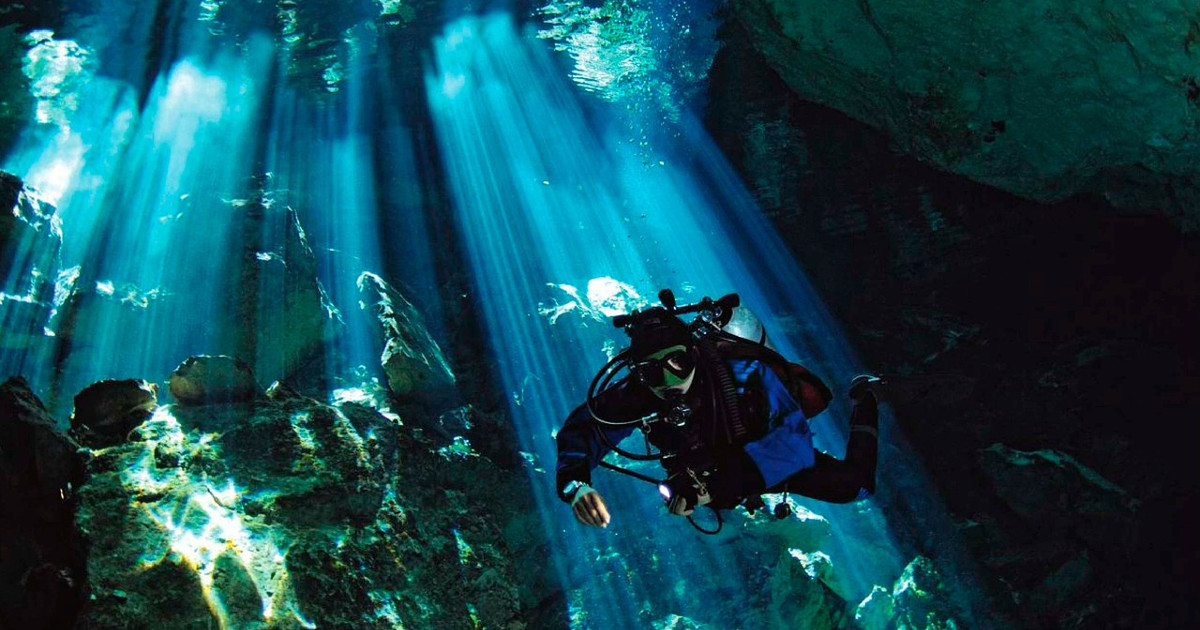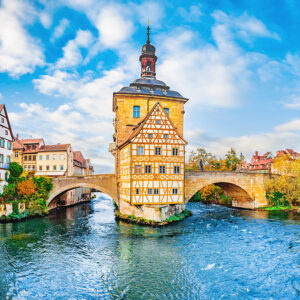The land of the Maya that includes the states of Yucatán, Campeche, and Quintana Roo in southeastern Mexico is a divers dream. The Yucatán Peninsula, enclosed by the Gulf of Mexico to the west, the Yucatán Channel to the north, and the Caribbean Sea to the east, offers year-round diving opportunities for recreational and technical divers alike.
Composed mainly of soluble limestone bedrock, the northern half of the peninsula is devoid of rivers and lakes are a rare find. Rain dissolves through the rock into the underground aquifer, and in many areas, freshwater flows on top of intruding saline water towards the surrounding seas. The limestone ceiling collapsed in some areas, and sinkholes connecting the surface to subterranean water bodies formed. These sinkholes are locally known as cenotes, and the Mayan people still worship them as gateways to the underground. To cave divers, they are simply gateways to haven.
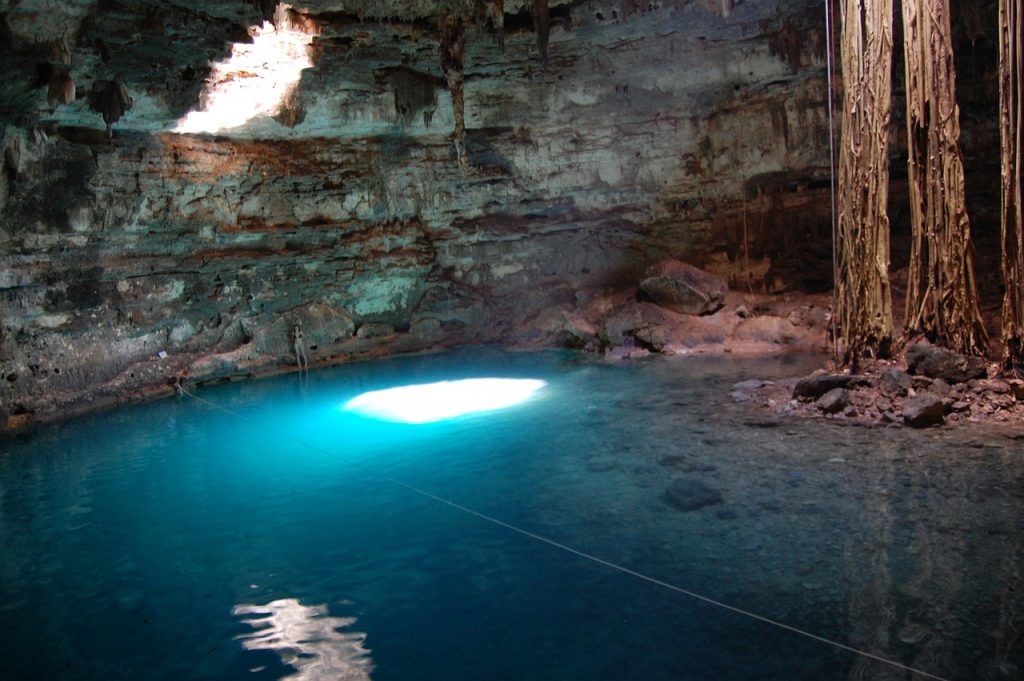
Ox Bel Ha, Sac Actun/Nohoch Nah Chich and Dos Ojos are famous cenotes in the state of Quintana Roo along the Caribbean coast of the Yucatán Peninsula. Located just north of Tulum, Dos Ojos is a huge underwater cave system. A maze of about 38 miles (61 kilometres) of interconnecting tunnels and domes has been explored so far. There are no less than 25 known sinkhole entrances to the system, including the two eyes (Dos Ojos). The Pit is currently the deepest cave passage in Quintana Roo. Divers will reach the bottom at 396 feet (118 meters).
After four years of trial and error, British cave diver Stephen Bogaerts and German explorer Robbie Schmittner connected the region’s second and third longest cave systems, known respectively as Sac Actun and Nohoch Nah Chich, which translates into Giant Birdcage System. Huge sections of the 91 miles (146 kilometres) explored pathways are decorated with stalagmites and stalactites that are tens of thousands of years old. While most of the water is stagnant and trapped in the rock, some flows into the Caribbean Sea via coastal springs.
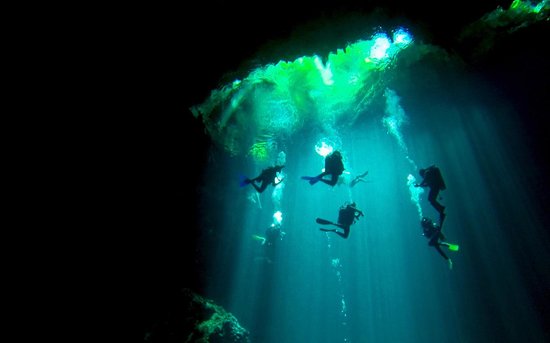
With about 113 miles (182 kilometres) of surveyed tunnels, Ox Bel Ha is currently the longest underwater cave in the world. The name translates to “Three Paths of Water,” and the entrance of the system is located south of Tulum in the middle of the jungle. About 130 cenotes allow divers to enter the system that possibly connects to other caves in the area and calls for continued exploration.
While cave diving should only be attempted after proper training, recreational divers have plenty of opportunities to explore the reefs dotting the Mayan Riviera and the island of Cozumel. The Palancar Reef, located on the southwest side of the island, is part of the Arrecifes de Cozumel National Park. Dive sites include the Palancar caves, the Palancar deep and shallow, and the Horseshoe reef, among others. Angelfish, Barracuda, Grouper, Moray eels, Nurse Sharks, and many other marine animals can be seen here. Depths usually range from 50 to over 100 feet, and currents can be swift on exposed sites. Divers will find many swim-troughs and small tunnels that they can explore.
The reef system around the island of Cozumel is part of the Mesoamerican Barrier Reef that stretches over 620 miles (1,000 kilometres) from the northern tip of the Yucatán Peninsula to the Bay Islands of Honduras. Several protected areas and marine parks in Mexico, Belize, Guatemala, and Honduras are part of the barrier reef. Many well-known dive sites are located in the Belize Barrier Reef, Arrecifes de Cozumel National Park, Hol Chan Marine Reserve, Sian Ka’an biosphere reserve, and the Cayos Cochinos Marine Park.
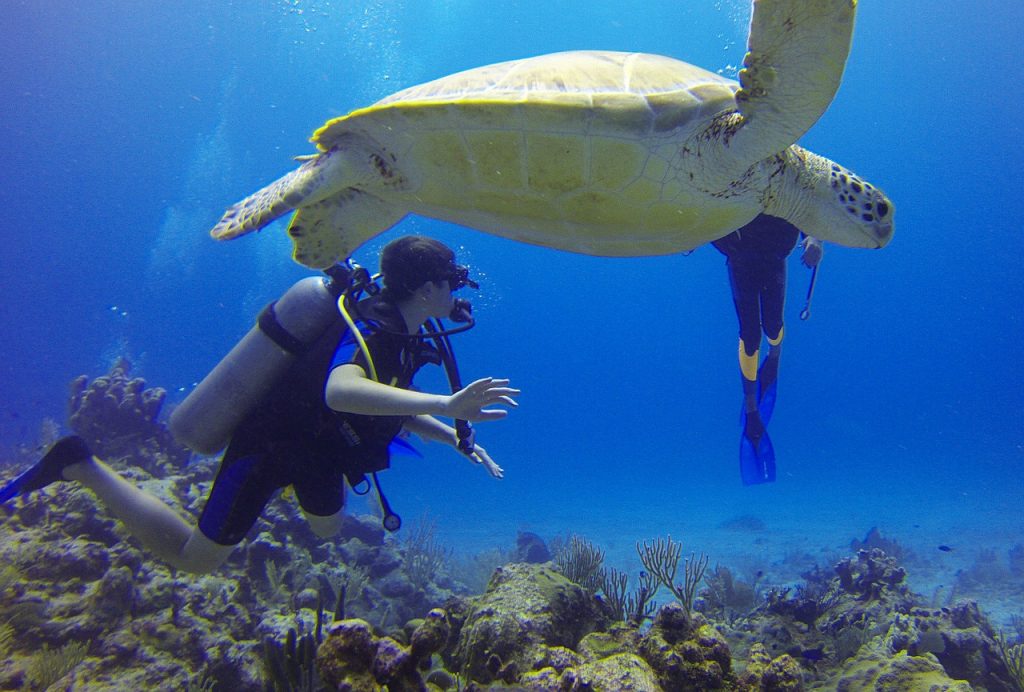
Grouper Reef, Tortugas Reef, and La Pared are some of the dive sites that can be visited from the Riviera Maya. They are all accessible from Playa del Carmen, and most sites can be explored by gently drifting north with the current. Visibility is usually excellent and in excess of 100 feet (30 meters), and sea turtles can be seen frequently.
Playa del Carmen is a good place to stay close to all the dive attractions. Originally a small fishing town, Playa today is the centre of the Riviera Maya which runs from south of Cancun to Tulum and the Sian Ka’an biosphere reserve. The city has limited new buildings to five stories in an attempt to retain its charm as an artists’ colony. While hurricanes and tropical storms interrupt diving activities from time to time, fall is usually the time to visit since most hotels offer deep discounts in an effort to attract tourists.
Divers will find many secluded beaches and artefacts along the Riviera Maya. Ctenosaura similis, better known as Iguanas, are a common sight in Mexico
